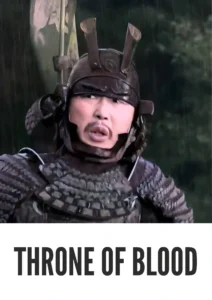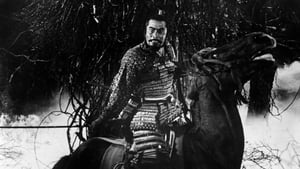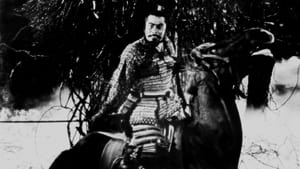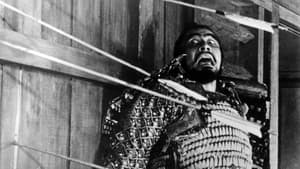Contact: [email protected]
Video Sources 0 Views
- Watch trailer
- Throne of Blood


Synopsis
Table of Contents
ToggleUnraveling the Mystery: A Review of Throne of Blood 1957

Introduction
In the vast landscape of classic cinema, few films hold the mystique and power of “Throne of Blood 1957.” Directed by the legendary Akira Kurosawa, this cinematic masterpiece weaves a tale of ambition, betrayal, and fate set against the backdrop of feudal Japan. With the release of an early colored version, viewers have the opportunity to delve into the rich tapestry of this timeless classic in a new and immersive way. In this review, we will explore the significance of “Throne of Blood 1957,” its journey into colorization, and its enduring impact on the world of cinema.
Check The Full Colorized Movies List
Check Our Colorized Movies Trailer Channel
Understanding Throne of Blood 1957: Director, Cast, and Genre
“Throne of Blood” emerges as a quintessential masterpiece in Kurosawa’s illustrious career, showcasing his unparalleled storytelling prowess and visual acumen. Set in medieval Japan, the film follows the ambitious warrior Washizu, portrayed by the iconic Toshiro Mifune, as he navigates the treacherous world of power and politics. Kurosawa’s direction infuses the narrative with a sense of foreboding and tragedy, elevating it beyond the confines of traditional genre conventions.
The cast of “Throne of Blood” delivers performances of extraordinary depth and intensity, with Toshiro Mifune’s portrayal of Washizu standing as a testament to his status as one of cinema’s greatest actors. Alongside Mifune, Isuzu Yamada captivates audiences with her haunting portrayal of Lady Asaji, Washizu’s ambitious and manipulative wife. With its blend of historical drama and psychological thriller elements, “Throne of Blood” transcends genre boundaries, solidifying its status as a timeless classic.
Exploring the World of Throne of Blood 1957: Plot and Characters
“Throne of Blood” unfolds with gripping intensity as Washizu and his comrade Miki encounter a mysterious spirit in the forest, who prophesies Washizu’s rise to power and eventual downfall. Fueled by ambition and paranoia, Washizu conspires to fulfill the prophecy by murdering his lord and seizing control of his castle. However, as his grip on power tightens, Washizu finds himself consumed by guilt and madness, ultimately meeting a tragic end at the hands of his own men.
Kurosawa’s masterful direction imbues the film with a palpable sense of dread and uncertainty, as Washizu’s descent into darkness unfolds against the backdrop of a world ravaged by war and political intrigue. With its richly drawn characters and atmospheric cinematography, “Throne of Blood” stands as a timeless meditation on the corrupting influence of power and the inevitability of fate.
The Art of Film Colorization
Film colorization has long been a subject of debate within the film industry, with proponents arguing that it offers a fresh perspective on classic works and detractors contending that it undermines the integrity of the original film. The process involves digitally adding color to black and white films, with varying degrees of success depending on the technology and techniques used.
Early Colored Films: A Brief History
The history of colorization dates back to the early days of cinema, with filmmakers experimenting with hand-painted frames and tinting techniques to add color to their films. However, it wasn’t until the advent of advanced digital technologies in the late 20th century that colorization became a widespread practice in the industry.
Throne of Blood 1957 and Its Early Colored Version
In a bold move, the producers of “Throne of Blood” opted to release an early colored version of the film, offering audiences a new way to experience Kurosawa’s visionary work. While some purists may balk at the idea of tampering with a cinematic classic, others see it as an opportunity to introduce new audiences to the film and breathe new life into a timeless masterpiece.
The Debate Over Film Colorization
The debate over film colorization remains contentious, with passionate arguments on both sides of the issue. While some argue that colorization offers a fresh perspective on classic films and can attract new audiences, others contend that it undermines the artistic integrity of the original work and robs it of its intended impact and emotional resonance.
Examining Throne of Blood 1957 as an Early Colored Film
As with any colorized classic, the question remains: does the addition of color enhance or detract from the viewing experience? In the case of “Throne of Blood 1957,” the early colored version offers a visually stunning interpretation of Kurosawa’s atmospheric cinematography, with vibrant hues and rich textures adding depth to the film’s haunting imagery. While purists may prefer the original black and white version, the colorized edition provides an opportunity for new audiences to engage with Kurosawa’s timeless themes and cinematic artistry.
Influence and Legacy: Throne of Blood 1957’s Impact on Cinema
“Throne of Blood 1957” stands as a towering achievement in the realm of world cinema, inspiring generations of filmmakers and establishing Kurosawa as one of the medium’s greatest auteurs. Its exploration of themes such as ambition, betrayal, and fate has left an indelible mark on the world of cinema, influencing countless directors and shaping the course of film history.
Director’s Cinematic Legacy: Beyond Throne of Blood 1957
Akira Kurosawa’s contributions to cinema extend far beyond “Throne of Blood,” with a body of work that includes such masterpieces as “Rashomon,” “Seven Samurai,” and “Yojimbo.” His innovative storytelling techniques and profound exploration of the human condition have earned him a place among the most revered filmmakers of all time.
Themes Explored in Throne of Blood 1957
“Throne of Blood” delves into a myriad of existential themes, including the corrupting influence of power, the inevitability of fate, and the fragility of human ambition. Through its richly drawn characters and atmospheric visuals, the film offers a profound meditation on the nature of morality and the consequences of unchecked ambition.
Reception and Controversy Surrounding Throne of Blood 1957
Upon its release, “Throne of Blood 1957” received widespread critical acclaim, with many praising Kurosawa’s visionary direction and Mifune’s powerhouse performance. However, the decision to release an early colored version of the film sparked controversy among purists, who argued that it detracted from the integrity of the original work.
Where to Watch Throne of Blood 1957 Online
For those eager to experience the timeless brilliance of “Throne of Blood 1957,” the film is readily available on popular streaming platforms, allowing viewers to immerse themselves in Kurosawa’s haunting world from the comfort of their own homes.
FAQs About Throne of Blood 1957
Q: What is the significance of the title “Throne of Blood”?
- A: The title “Throne of Blood” is a reference to William Shakespeare’s play “Macbeth,” upon which the film is based. It symbolizes the bloodshed and violence that accompany the pursuit of power and ambition, themes that are central to both the play and the film.
Q: Is “Throne of Blood” a faithful adaptation of Shakespeare’s “Macbeth”?
- A: While “Throne of Blood” draws heavily from the plot and themes of “Macbeth,” director Akira Kurosawa infuses the film with his own distinct style and cultural influences. The result is a unique interpretation of the classic tale that remains faithful to the spirit of Shakespeare’s work while offering new insights and perspectives.
Q: What are some of the key differences between “Throne of Blood” and Shakespeare’s “Macbeth”?
- A: While “Throne of Blood” remains true to the overarching storyline of “Macbeth,” there are several notable differences between the two works. For example, Kurosawa’s adaptation shifts the setting from medieval Scotland to feudal Japan and incorporates elements of Japanese culture and mythology. Additionally, certain characters and plot points are altered or omitted to suit the film’s narrative and thematic objectives.
Q: Who are some of the other notable films directed by Akira Kurosawa?
- A: Akira Kurosawa is widely regarded as one of the greatest filmmakers of all time, with a diverse body of work that includes such masterpieces as “Rashomon,” “Seven Samurai,” “Yojimbo,” and “Ikiru.” His innovative storytelling techniques and profound exploration of the human condition have left an indelible mark on the world of cinema, influencing generations of filmmakers around the globe.
Q: What is the significance of Toshiro Mifune’s performance in “Throne of Blood”?
- A: Toshiro Mifune’s portrayal of the ambitious warrior Washizu is widely regarded as one of the greatest performances in cinema history. His intensity, charisma, and physicality bring the character to life in a way that is both mesmerizing and unforgettable, elevating “Throne of Blood” to a level of artistic excellence that few films can match.
Conclusion
In conclusion, “Throne of Blood 1957” stands as a timeless masterpiece of cinema, revered for its haunting imagery, profound exploration of existential themes, and visionary direction by Akira Kurosawa. Whether viewed in its original black and white format or the early colored version, the film continues to captivate audiences, offering a thought-provoking meditation on the human condition and the nature of existence. While the debate over film colorization may persist, one thing remains certain: the enduring legacy of “Throne of Blood 1957” is a testament to its status as a cinematic classic for the ages. So, whether you’re a seasoned cinephile or a newcomer to the world of classic cinema, be sure to experience the haunting beauty of “Throne of Blood 1957” for yourself, and discover why it remains an essential entry in the annals of cinematic history.













